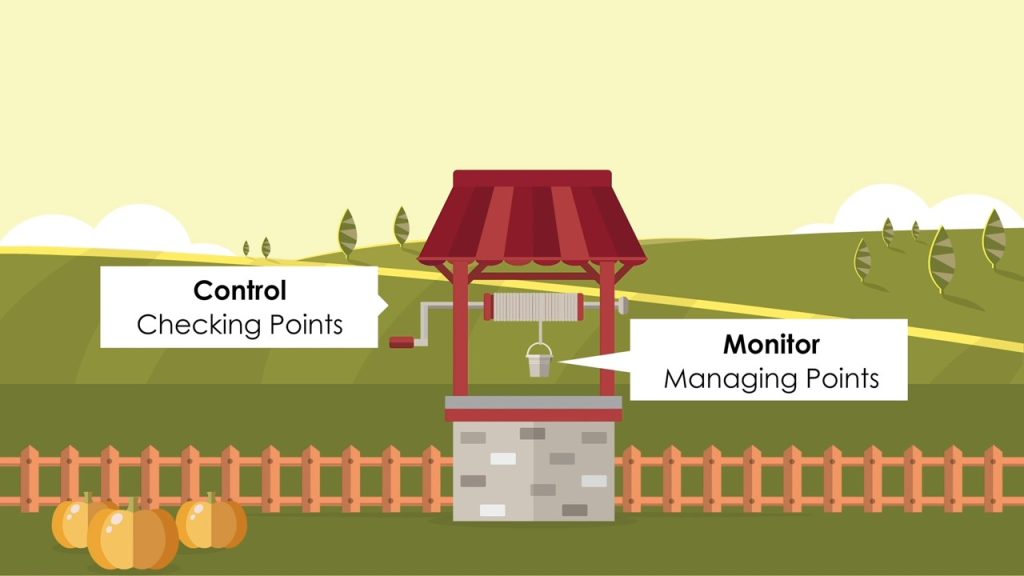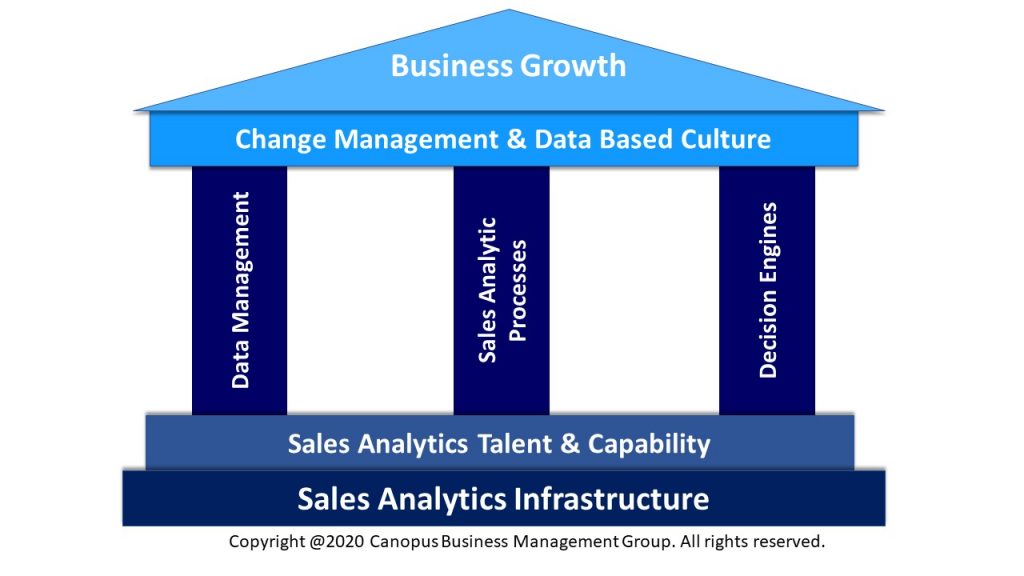
In a client-centric business growth strategy, effective meetings are indispensable. They ensure that client needs, expectations, and feedback are clearly communicated and understood. By structuring meetings to be concise, goal-oriented, and inclusive, businesses can foster stronger client relationships and trust. Effective meetings not only align internal teams with client objectives but also enable proactive problem-solving and innovation. Regular, transparent communication through well-executed meetings demonstrates commitment to client satisfaction and helps in building long-term partnerships. Ultimately, the effectiveness of these meetings is reflected in the overall growth and success of the client-centric business.
#nilakantasrinivasan-j #canopus-business-management-group #B2B-client-centric-growth

Unlocking growth and building meaningful connections are two powerful pursuits that often go hand-in-hand. When we seek personal and professional growth, we inevitably encounter opportunities to connect with others in meaningful ways. By fostering genuine relationships, we create a network of support and collaboration that propels us forward. This synergy of shared experiences and mutual encouragement nurtures both individual development and collective success. Embracing a mindset of growth and connection creates a ripple effect of positive change.
#nilakantasrinivasan-j #canopus-business-management-group #B2B-client-centric-growth #James-Cash-Penney
Background
A leading global ship management company with 600 ships under management and 24k seafarers wanting to strengthen is ‘competence’
Condition:
- Frequent escalations to senior management from ship owners.
- Some fleet owners terminated contracts
- Regulatory show stoppers On-shore teams (front line) are disengaged
Big 5 Actions:
- Process Definition and Digitization of EIR and VOC Management
- Employee Client Centricity Attitude Dipstick
- Core Process & Service Management Metrics Development
- Structure implementation of Central Function for Client Centricity
- Leadership workshop for digital transformation roadmap
- Mentor digitization projects
- Employee Customer Centricity Development Plan

Sustaining client centricity can be difficult for a number of reasons, including:
- Resistance to change: Implementing a client-centric approach may require changes to existing processes and ways of doing things, which can be met with resistance from employees who are comfortable with the status quo.
- Lack of understanding: Without proper training and education, employees may not fully understand the benefits of a client-centric approach or how to implement it effectively.
- Limited resources: A client-centric approach may require additional resources, such as increased staff or technology, which may not be available.
- Lack of accountability: Without clear accountability and oversight, it can be difficult to ensure that a client-centric approach is being implemented and maintained.
- Difficulty in Measuring Success: Without clear metrics to measure the success of a client-centric approach, it can be difficult to evaluate its effectiveness and make adjustments as needed.
#nilakantasrinivasan-j #canopus-business-management-group #B2B-client-centric-growth #Client-centricity

Agile enterprises are customer centric because they prioritize the needs and goals of their customers in all aspects of their business. Agile methodologies, such as Scrum and Kanban, are designed to be flexible and responsive to change, which allows organizations to quickly adapt to the evolving needs of their customers.
In an agile enterprise, customer feedback is actively sought and incorporated into product development and decision-making processes. This allows the enterprise to continuously improve and deliver products and services that align with customer needs.
Additionally, Agile enterprises also tend to have a flat organizational structure, which allows for better communication and collaboration across teams and departments, enabling them to respond more quickly to customer needs. They also tend to use cross-functional teams, which are composed of individuals from different areas of the business, such as design, development, and marketing, to work together to deliver products and services that meet customer needs.
In summary, Agile enterprises are customer centric because they prioritize the needs of their customers, actively incorporate customer feedback, and continuously improve their products and services to meet those needs.
One example of how agility helped in client centricity is the case study of a large retail bank that implemented an Agile approach to managing their customer service operations.
The bank was facing a significant challenge in maintaining high levels of customer satisfaction, as their traditional, hierarchical structure was causing delays in responding to customer complaints and requests. Additionally, the bank was facing increased competition from fintech companies that were more agile and able to respond quickly to changing customer needs.
To address these issues, the bank decided to adopt an Agile approach to managing their customer service operations. They formed cross-functional teams composed of representatives from different areas of the business, such as customer service, IT, and compliance, and implemented daily stand-up meetings to ensure that everyone was aware of the most pressing customer issues.
The bank also began actively seeking customer feedback and incorporating it into their decision-making processes. They also implemented a system for tracking customer complaints and requests in real-time, which allowed them to quickly address and resolve issues.
As a result of these changes, the bank was able to significantly improve their customer satisfaction levels and reduce their customer complaint resolution time. The agility helped them respond to the changing customer needs in a timely manner. Additionally, the bank was also able to reduce costs and improve overall efficiency, which helped them better compete with fintech companies.
This case study shows how agility helped in client centricity by allowing the bank to respond more quickly to customer needs, improve customer satisfaction, and ultimately increase competitiveness.
One example of agile client centricity in a startup is the case study of a small software development company that specializes in building custom mobile apps for small businesses.
The company had struggled to retain clients in the past because they were not able to deliver products that met the unique needs of each business. The company decided to adopt an Agile approach to software development, which allowed them to be more flexible and responsive to the evolving needs of their clients.
The company began using Scrum, an Agile methodology, to manage their software development projects. They formed small, cross-functional teams composed of developers, designers, and project managers, and held daily stand-up meetings to ensure that everyone was aware of the most pressing client needs.
The company also began actively seeking client feedback and incorporating it into their development process. They implemented a system for tracking client requests and issues in real-time, which allowed them to quickly address and resolve problems.
As a result of these changes, the company was able to significantly improve their client retention rate. Clients were happy with the product as it met their needs and the company was able to deliver the product on time and on budget. Additionally, the company was able to reduce costs and improve overall efficiency, which helped them to better compete with larger software development companies.
This case study shows how agility helped in client centricity by allowing the company to respond more quickly to client needs, improve client satisfaction and ultimately increase competitiveness.
Here are a few simple ways to start incorporating Agile principles in a non-software environment:
- Start with small, cross-functional teams: Form teams that include representatives from different areas of the business, such as sales, marketing, and operations. This will ensure that everyone is aware of the most pressing customer needs and can work together to deliver solutions.
- Hold regular meetings: Hold daily or weekly meetings to discuss progress, identify any roadblocks, and ensure that everyone is on the same page.
- Prioritize customer feedback: Actively seek and incorporate customer feedback into decision-making processes. This will help ensure that products and services align with customer needs.
- Emphasize flexibility and adaptability: Be open to change and willing to pivot when necessary. Agile is all about being able to respond quickly to changing circumstances.
- Use visual management tools: Use visual tools, such as Kanban boards or task lists, to track progress and identify areas for improvement.
- Encourage collaboration and communication: Encourage open communication and collaboration across teams and departments.
- Test and Iterate: Continuously test and improve the process, gather feedback, and iterate.
It is important to note that Agile is a mindset and a set of principles, not a one size fit all methodology. Therefore, it’s important to tailor the approach to the specific needs of the organization and its environment.
#nilakantasrinivasan-j #canopus-business-management-group #B2B-client-centric-growth #Agile #Customer-centric

There is a good chance that you haven’t heard of these terms – Managing Points and Checking Points or MPCP.
Now, we will talk about what are ‘MPCP’ and why they are needed, with an example.
In order for you to fully relate to MPCP, you will need to have some background in Daily Work Management and Standard Work.
In an organization, there would be two kinds of activities or goals – Run the Organization (Daily Work Management) and Change the Organization (Transformation or Improvement). For example, if you wish to sustain existing revenue, you would want to maintain or upkeep many process parameters and initiatives through regular management, reviews, support existing products with improvements, provide enabling tools, resources, etc. These fall under Daily Work Management. And when you wish to shift gears and accelerate the business and grow 10x, then you will be looking for Transformation, ie., developing new products, adding new facilities, hiring more people, acquiring new technology, etc.
Managing Points and Checking Points (MPCP) are part of the Daily Work Management routine. They are a set of accountability and responsibility areas for a given role in the organization, aimed mainly at sustaining current level. This could include small improvements to fix issues, address day to day issues, monitor current state of process, ensure there is no deterioration of performance, etc. One of the biggest goals of DWM is to reduce the variability in the output or in other words bring in consistency in the system.
You may be confused about how MPCP is different from Annual Goals or KRAs? Remember that MPCP is for a role and Annual Goals and KRAs are for individuals. Thus it is very unlikely that MPCP would change year on year for role, of course unless the role scope has changed. They are also independent of title.
Now let’s understand Managing Points.
Managing Points are representative of accountability of any given role. For example, a CEO is accountable for business growth, employee engagement, compliance to law of the land, fair treatment to vendors, etc. So he/she has to oversee these aspects. He can’t tell the Board that my Sales Head had a bad year and so we didn’t meet the target. So Managing Points arise from the job description or role description. It also emanates from what the Board or his superiors want him/her to do. In case of any other employee in the organization, Managing Points (MP) are derived from 3 sources – Role description, Manager’s MP and Manager’s CP.
Now let’s move to Checking Points.
Checking Points are demonstrations of responsibility for any given role. These are metrics, tasks or activities that you will do to ensure your accountability is delivered. For example, a kindergarten teacher is accountable to ensure the kids are safe in the classroom. They don’t eat a crayon or anything like that. She will constantly check the classroom for littering, keep close watch on hyperactive kids, etc. So this becomes her responsibility. If I expand the definition of Checking Points (CP) a bit, then it covers input and process parameters, adherence to standard operating procedures (SOP), leading indicators of managing points so that necessary course correction can be done, etc.
A well designed MPCP system for any role should include 2 to 3 CPs for any MP and no more than 5-6 MPs for a role.
Let’s consider one more example of MPCP. Consider you are driving down to pick up your Chairman from the airport. He is visiting your country office for the first time after he took over and you don’t want to mess it up. It’s a 90 mile drive from your factory. You have a driver and a colleague with you. Your Managing Point will be to ensure you reach the airport on-time. Always remember Managing Points have to be measurable parameters. So what will be Checking Points (CP) for this Managing Point (MP)? The departure time from factory, route to be taken, when and where to stop over, average speed, who should be the driver, ensuring the car has all necessary travel documents, etc.,
Each one of the items mentioned here can become your Checking Point but usually the critical ones are prioritized. Some of them, you may choose to delegate to your secretary or empower the driver, in which case it may become their MP. But they are still your accountability.
Let’s say, the route you initially chose has congestion, you will ask the driver to take a different route and not stop-over to compensate for the time lost. Thus you have to measure or assess Checking Points (CP) more often than Managing Points (MPs) to get desired results.
I hope through this example, you were able to understand the importance and linkage between MP and CP.
In a large organization, MPCPs of various roles have to be interlinked. So MPCP plays the vital role of linking job responsibility, process standards and, link to manager or subordinate roles.
At Canopus, we have facilitated the development MPCP and some of most frequently asked questions from participants include:
- How is MPCP different from Annual Goal Sheets?
- How is MPCP different from Projects and Special Assignment?
- Will my MPCPs change every year?
- Can I assign MP or CP to my peers or other departments?
If you have similar questions, feel free to contact me and I’m happy to guide. You can also take self-paced online course Standard Work that will give you templates and many more examples.
#nilakantasrinivasan-j #canopus-business-management-group #B2B-client-centric-growth #MPCP

While organizations like Disney and Ritz-Carlton have the luxury to hire front line staff based on Emotional Quotient (EQ), you will agree that not all of us have that levy. More importantly, in some sectors we have to weigh other skills such as technical, financial, engineering, software than EQ during hiring. For example, in product service, B2B front line, IT solutioning, etc., it is not a pragmatic aspiration to expect employees to possess high EQ & technical know-how.
Over the years, employees have understood the importance of customer centricity. So everyone wants to be customer centric but the question really is, how? Are the specific pointers that CXOs & HODs can give to their team on what to do? Motivating & inspiring them to do so is just as good as cranking the engine. What about throttling and shifting gears?
Unfortunately, there are very few leaders who go that far. If you want your employees to emulate certain behavior everytime-everyday, you have to be very specific and take a prescriptive approach.
Here are the 8 super simple behaviors that you can demonstrate every day, in meetings, field visits, reviews, planning, brainstorming sessions, or even when you scroll down a spreadsheet. Every customer facing employee (rather every employee) can be encouraged to imbibe these practices to become customer centric that will facilitate value generation for customers & business.
We will start with the simplest and go down to the difficult ones.
- Consistently deliver on promises: This is the simplest way to build trust and usually doesn’t cost much. And promises, whether big or small, are what we voluntarily make! So, it’s pretty much in our control.
- Permanent Issue Resolution: Whatever technology and processes we put in place, problems do crop up, every now and then. These issues are irritants for customers. Imagine, how many different products and services he/she uses. If we learn to go to the root of the customer issue and fix it permanently, we are not only helping this customer, but proactively preventing many such issues. This is when we can devote our energies towards constructive strategies.
- Collaborate together to fix customer issues: Organizations have become complex systems and authority is largely decentralized. Unless we collaborate internally and externally with all stakeholders, we will never put up a good show in front of customers.
- Listening to customers and understanding their needs: While it sounds very simple, it’s important to recognize every customer is unique. Furthermore, needs and requirements are very different. And lest, we have time to listen.
- Look for ways to make things better for our customers: Unearthing the unarticulated needs of customers pushes it by one more notch. Real and productive innovation starts here.
- Going out of way to help customers: We are trained to follow rules, processes and policies. Many a time, the biggest hindrance to customer centricity are none but these factors. The courage to challenge and break them when the situation really warrants is not short of heroism in Customer Centricity.
- Keep customers at the heart of our decisions: We are in business and not in charity, but when it comes to day to day decisions, do we weigh customers equally as business?
- Serve with Passion: While the first 6 points hinged on skill & action, the last two are about will. Conviction is born at the bottom of the heart.
If you wish to learn more about these 8 behaviors or how to create buzz around customer centricity in your organization, happy to be of help any time.
#nilakantasrinivasan-j #canopus-business-management-group #B2B-client-centric-growth #Customer-Centricity

Arun was a Regional Head for Channel Expansion & Relationship for a white goods manufacturer. This year he received an award for outstanding performance for a record appointment of new channel partners (distributors and retailers) in a region that was considered as a weak territory for the company. The CEO said that this was a recognition of his problem solving skills.
It all started last year with the company setting an ambitious target to expand its network. In the first 2 quarters, there wasn’t much break through in the channel appointment. Management decided to move Arun from another region to drive this goal. Arun is known as a messiah in the company. Whether it is revenue, market share growth, network expansion, new product penetration, he is known for miraculous improvements. He could turn deserts into oases. His patrons say he’s very systematic and focused. While his critics claim he micromanages things. Nonetheless, as predicted, within the remaining 2 quarters of the FY, Arun swiftly throttled the appointment of dealers and distributors, thereby exceeding the original annual target set, which at the end of 2nd quarter looked un-accomplishable. Management’s aspiration was nothing more than achieving half the annual target set in the beginning of the year, with only 2 quarters in hand. So messiah proved his metal again!
What did Arun do differently?
- He put a progress tracker in place
- He broke the partner appointment process into various milestones
- He ensured there is a daily review of all district appointment managers against the milestones.
- In the reviews, he will dig deeper and deeper into cases where there was doubt of closure.
- He personally spoke to prospective distributors and even visited a few in person
- He increased the local media advertisements calling for partners to join.
Though all this might sound very intrusive, the fact is he got it done!
All is not rosy about Arun. There is one minor problem in our Messiah. Whenever he is done and moves to another role or area, all the old problems crop up again. Arun used to take pride in this, that once he leaves things fall flat. He was sure this is a way to let the management realize his value.
Was Arun really a good problem solver? Or is he a trouble-shooter?
| Trouble-shooter | Problem Solver |
|---|---|
| Always fixing the performance is his/her goal | Defines what is really the problem to be solved |
| Provides short term fixes | Identifies the root causes of the problem |
| Focuses on improvement in output | Validates system level root causes with facts or data |
| Doesn’t openly share insights & only emphasizes on prognosis | Shares his/her findings & insights with others |
| Works in silos & uses his charisma as a leverage | Engages the stakeholders on ground to provide eradicate the problem permanently |
| Usually gives quick fixes as such solutions give results faster | Puts permanent solutions that are sustainable |
| Cadence is limited to his tenure | Create cadence to sustain the improved state beyond him |
| Keeps his team in suspense, fear & pressure | Makes it a Team Oriented Problem Solving (TOPS) approach |
I will allow you to decide where Arun fits better.
After all, he never examined why this territory had low network penetration? What is the perception of existing and prospective channel partners about the brand? Are existing channel partners profitable and satisfied? Is channel partner attrition a problem? What is it that the competitors are doing differently than us? What is the deficiency of channel management team in this region?
At best, he is a good mercenary.
More importantly, not everyone who gets things done are problem solvers. Simply put, true Problem Solvers leave everything a little better for others than they found it!
#nilakantasrinivasan-j #canopus-business-management-group #B2B-client-centric-growth #Problem-solver

Let us explain why ‘Root Cause Analysis Boot Camp for Business Leaders’ is needed. Business Leaders are hired to drive change, bring in transformation, incubate new ideas and grow the business and not merely to sustain current levels. So it is important for them to be good at problem solving. That’s given and most business leaders come in with very good troubleshooting skills. They can clear bottlenecks and get things going.
Here are two statements about the nature of the business problems. Let’s say these are my hypotheses:
- Most of the business problems that we encounter (but for centennial events like pandemics) are not new. Eg: Not able to meet growth targets, delay in deliveries, quality and customer satisfaction issues, employee engagement & attrition issues, service disruption & continuity, etc. So the real problem solving skills that business leaders bring in is eliminating recurrence of problems.
- Today’s business models are very different. We live in a transient world where nothing is permanent – technology, people, process, product and competition. So problems are unique and cannot be solved with the same past wisdom.
I’m going to allow you to decide which of these fits in your scheme of things.
Immaterial of that, problems once solved will not recur under 3 conditions:
- We solved the correct problem (we knew the ‘Whats’)
- We identified the root causes (we knew the ‘Whys’)
- We addressed root causes with sustainable actions (we executed the ‘Hows’)
Unfortunately, we falter at least in one of these steps and that’s not good for the business. Buy why?
Based on my experience in mentoring several business leaders in solving business problems, the most common causes I notice are :
- Giving more importance to the problem solving methodology than the problem. Whether you use PDCA, DMAIC, 8D, IDOV, EDIPT, QC story, many leaders get lost in the semantics, steps, templates, etc.,
- Problem solving is siloed and not cross functional. Most business level problems need strong cross-functional participation
- Midway, they lose interest and switch to troubleshooting mode
- They are afraid to rack up the system level root causes
- Solutions are over engineered. They rely too much on technology, idealism and good will to be sustained in the long run.
How can leaders hone their business problem solving or root cause analysis skills?
The answer simply lies in learning by doing. Creating multiple opportunities to get their hands dirty with run problems and in doing so, every time improve. This is easier said than done. The most practical way to do this is through RCA Boot Camps.
Root Cause Analysis Boot Camp for Business Leaders covers:
- Acquiring knowledge by reasoning
- Self-paced digital learning
- Access to case files
- Knowledge assessments
- Working with cross-functional teams
- Working on 2 or more live problems, each time with increasing difficulty level
- Guidance and mentoring of an expert
- Defend the solution to senior management in a review presentation
- Becoming an internal subject matter expert
Should you have any questions regarding the RCA Boot Camps, feel free to reach out to us.
If you are looking for Root Cause Analysis Boot Camps in Chennai, Bangalore, Mumbai, Delhi and across India, contact us
#nilakantasrinivasan-j #canopus-business-management-group #B2B-client-centric-growth #Root-cause-analaysis #RCA
Sales Analytics Framework
The Analytics Framework for Sales aims to support a long term strategy of applying analytics in sales and to integrate seamlessly with remaining part of the organization’s analytics strategy.
There are 3 important pillars for effective deployment of Sales Analytics Framework. A framework like this, when implemented consistently, will shift Sales Analytics from a tactical business enabler to strategic business enabler.

There are two important prerequisites that act as a foundation for the 3 pillars and at least one over-arching philosophy to derive best out of the Sales Analytics Framework. Let us look at what are they:
Business Benefit of deploying Sales Analytics Framework:
Business Growth
The ultimate business objective of using Sales Analytics to help meet organizational long term and short term goals such as Market Share, Revenue Growth, Profitability, Customer Retention, Cross-sell, Upsell, Referral business, etc
Overarching Philosophy:
Change Management & Data Based Culture
Ultimately leaders play a big role in deciding how the outcomes of analytics are put in practice during the decision making process. Businesses have their priorities that are time sensitive and hence sales directors play a big role in deciding how these would be actually applied. Driving a culture of data or fact based decision making within the organization should be one priority when it comes to sales analytics. The benefits of sales analytics grow multi-fold when cultural change occurs.
The Pillars:
Data Management
The first and foremost success factor in Sales Analytics is the ability to acquire, clean, organize, integrate, describe, share, govern and store data to be used for analytics. Data is usually acquired from various sources. Most organizations hit a road-block right at this stage of the journey. The next step is to clean and integrate data from various sources so as to enrich its value before performing required analytics.
Sales Analytic Processes
The core sales analytic processes include the ability to enrich the data through advanced analytics & data science and to provide, visualization, exploratory data analytics (EDA), business insights to drive sales, develop predictive models such as propensity, lead scoring, up-sell, cross-sell prediction, etc. The ongoing optimization and deployment of models in the production environment and their regular refinement are all integral to Sales Analytic Processes. The element of focus for us in Sales Analytics Processes is to answer some of the design questions keeping in mind the above end states, such as Measure of Success of Analytics Program, what analytics are we going to perform, what data and models are we going to use and how will we share the results. Learn more about How can Sales Managers leverage Analytics?
Decision Engines
How do analytics capabilities deliver business value. Traditional outcomes of analytics decision engines were linked to information delivery and visualization enabled through Online Analytical Processing (OLAP)and data mining. On the other spectrum, insight discovery and integration to decision making processes are capabilities that add business value.
The Prerequisites
Sales Analytics Infrastructure
To start with organizations can work with minimal infrastructure for analytics, but to scale analytics capability, definitely investment in infrastructure is a must. Analytics Infrastructure, not restricted to Sales Analytics, includes databases and data warehouses, statistical and data mining systems, scoring engines, grids and cloud storage ,etc., The question that new entrants frequently ask is, is it not possible to start Sales Analytics without these. The answer is that it is possible. With SaaS, it is possible to put together low cost infrastructure to get started with sales analytics. In addition to storage and handling, software tools required for sales analytics are also part of the assets. While there are standard and custom tools, the best to start would be Tableau, R, Python, SAS, RapidMiner, Orange, etc. Learn more about Guide to Selecting Sales Analytics Software Tools
Sales Analytics Talent & Capability
Quite often this is the most ignored area in analytics and is also a pitfall. Organizations get neck deep in creating analytics infrastructure, acquiring talent to manage these, and analytics talent with IT capability to deploy these tools, but they fail to understand that business users are really the ones who need upskilling. If they fail to recognize and resist the usage of analytics in their daily work management, Sales Analytics will only remain a pilot project to showcase. Lead More about What specific analytical skills are needed for Sales Managers in the era of Analytics?
#nilakantasrinivasan-j #canopus-business-management-group #B2B-client-centric-growth #sales-analytics #business-growth

Improving Your Organization’s Sales Analytics Capability
With the advent of Big data and Analytics, every single discipline of business entities have seen tremendous benefits derive out of data based insights. While Analytics has penetrated Operations, Supply Chain, Marketing, HR, and IT, one of the biggest beneficiaries that directly contributes to the top line of the organization is Sales Analytics. Marketing Analytics & Marketing Automation has ensured high return on investment for the marketing costs, increasing reach and quality of marketing communication. The demand so generated through effective marketing has to be converted to business volumes. This is where Sales Analytics plays a big role. Sales processes are quite complex, involving various partner organizations, internal functions, several legal and regulatory requirements. Adding to this complexity are factors such as engagement of off-role employees, high staff attrition, competition activity and economic conditions.
Sales Analytics plays a significant role in this pursuit. The dynamics of sales data and the factors mentioned above, demand that Sales Analytics be approached a little differently from other analytics programs such as Supply Chain or Operations Analytics. Traditional focus has been on acquiring an efficient Sales Analytics Solution, Sales Process Automation and Sales Intelligence technology tool. There are a variety of products in the market with incredible capabilities such as SAP Business Objects, Oracle Business Intelligence, Salesforce Wave analytics, Alteryx, Tableau, Qlik Sense Enterprise, Sisense, Microstrategy, etc.,
However, now-a-days, the business benefits from Sales Analytics are not usually constrained by technology capabilities rather by other factors such as:(arranged in no specific order)
- Data Quality & Data Governance
- Conviction of Sales Leadership towards data based selling
- Sales Analytics Talent & Capabilities
- Cross-functional Alignment
Unfortunately, leaders spend too much energy in selecting the right technology tool only to realize their team members aren’t ready for a heavy dose of data driven insights or ecosystem isn’t ready.
Data Quality & Data Governance
It’s no secret that sales data quality is a challenge as it involves partners, customers and external factors. Though hand-held devices, cloud storage and real time analytics tools have made eased things, no one can disagree that getting data that is reliable isn’t easy in sales. Further, many times it is difficult to audit its authenticity. Read More about the Importance of Data Quality & Data Governance for Sales Analytics.
Conviction of Sales Leadership towards data based selling
Sales is considered an art and building relationships with customers is considered as an enabler. Many Sales leaders don’t believe in looking beyond sales numbers. Metrics and data that provide insights and help us identify drivers aren’t given too much importance. Without this conviction, it is very difficult to see any real ROI for Sales Analytics investments. In fact, this is a show stopper. Read More about the Tips to build Sales leadership buy-in for data based selling through Sales Analytics
Sales Analytics Talent & Capabilities
In order to fully leverage Analytics and Big Data, Sales leaders need to build skills & capabilities among sales teams that include Quantitative Skills, Data or Fact based Decision Making & technical skills, Data based Problem Solving which will help them to decide what data is needed in any given scenario, framing hypotheses and validating the hypothesis through data. Read More about What specific analytical skills are needed for Sales Managers in the era of Analytics?.
Cross-functional Alignment
Prima facie, Sales Analytics seems to be an internal matter of the Sales function.However, true and meaningful Sales Analytics will require strong alignment of various functions such as Marketing, Supply Chain, Manufacturing, Quality, Product Development, Service, Business Planning, HR, etc. Studying the association of cross functional factors on Sales or Business Outcomes such as Market Share, Revenue, Profitability is very important. This means cross functional data sources will need to be analyzed in Sales Analytics. Read More about Non-Sales Data & its value in Sales Analytics.
Thus Building Organization’s Sales Analytics Capability needs a thoughtful & comprehensive approach.
#nilakantasrinivasan-j #canopus-business-management-group #B2B-client-centric-growth #sales-analytics #salesforce
Interview: Organizational Strategy Challenges & Solutions
Extract of an interview of Neil published in Consultants Review Magazine about Organizational Strategy Challenges and Solutions
The economy stands at a crucial juncture now and constant endeavour for excellence and accuracy has come to be more pivotal than ever before.
The goal now is to focus on industry needs with a futuristic perspective, in order to foresee the norms of tomorrow. Canopus Business Management Group (CBMG) is a business services firm that focuses on strategy implementation & business transformation to make them future fit, and it is this approach that has brought them a fair amount of success already. Incepted in 2009, by the MIT educated Nilakantasrinivasan Janakiraman(Neil), CBMG started operations in Chennai, with the vision of bringing something fresh to the consulting space. Read More
Sign-up for collaborat newsletter
